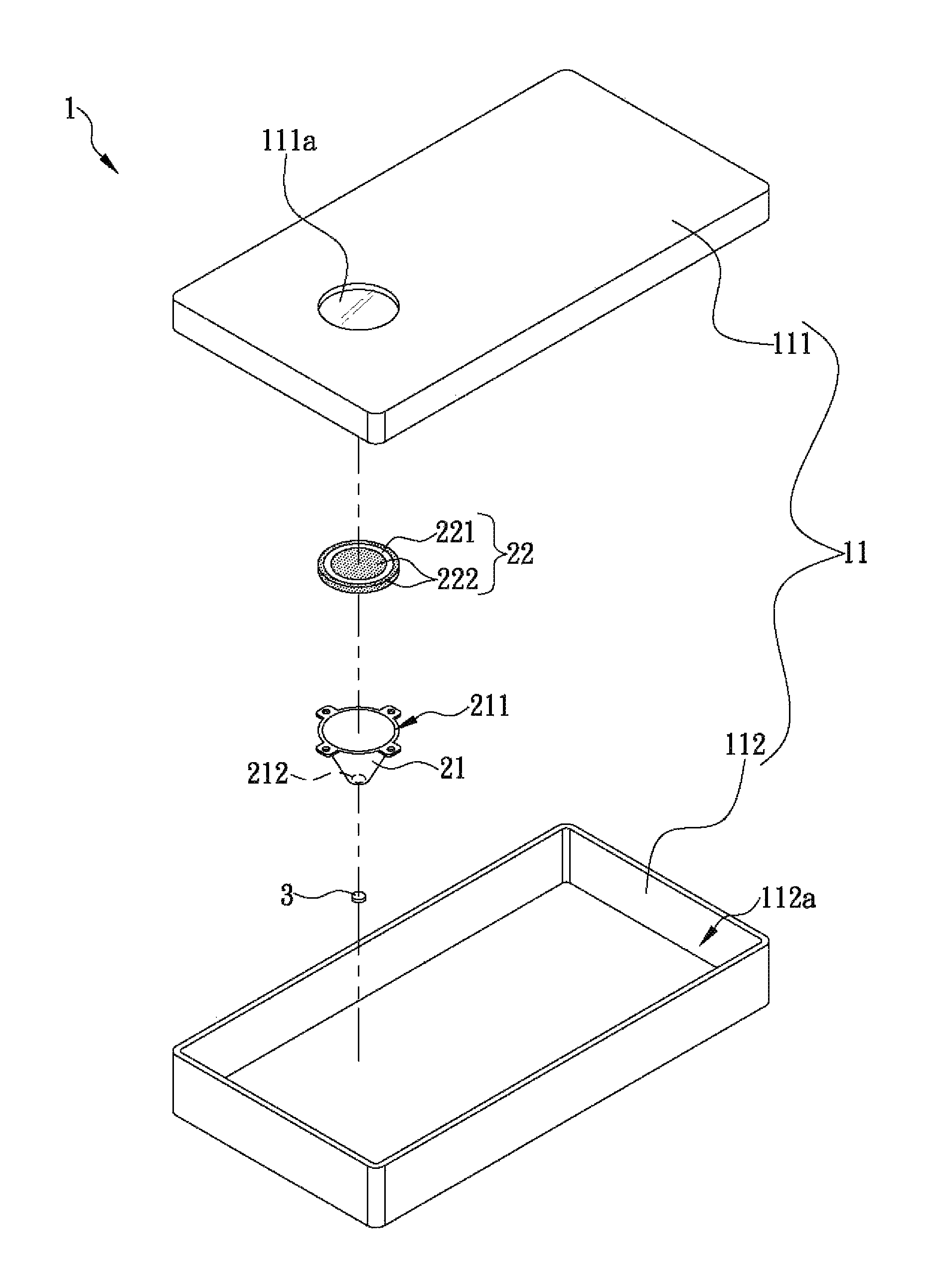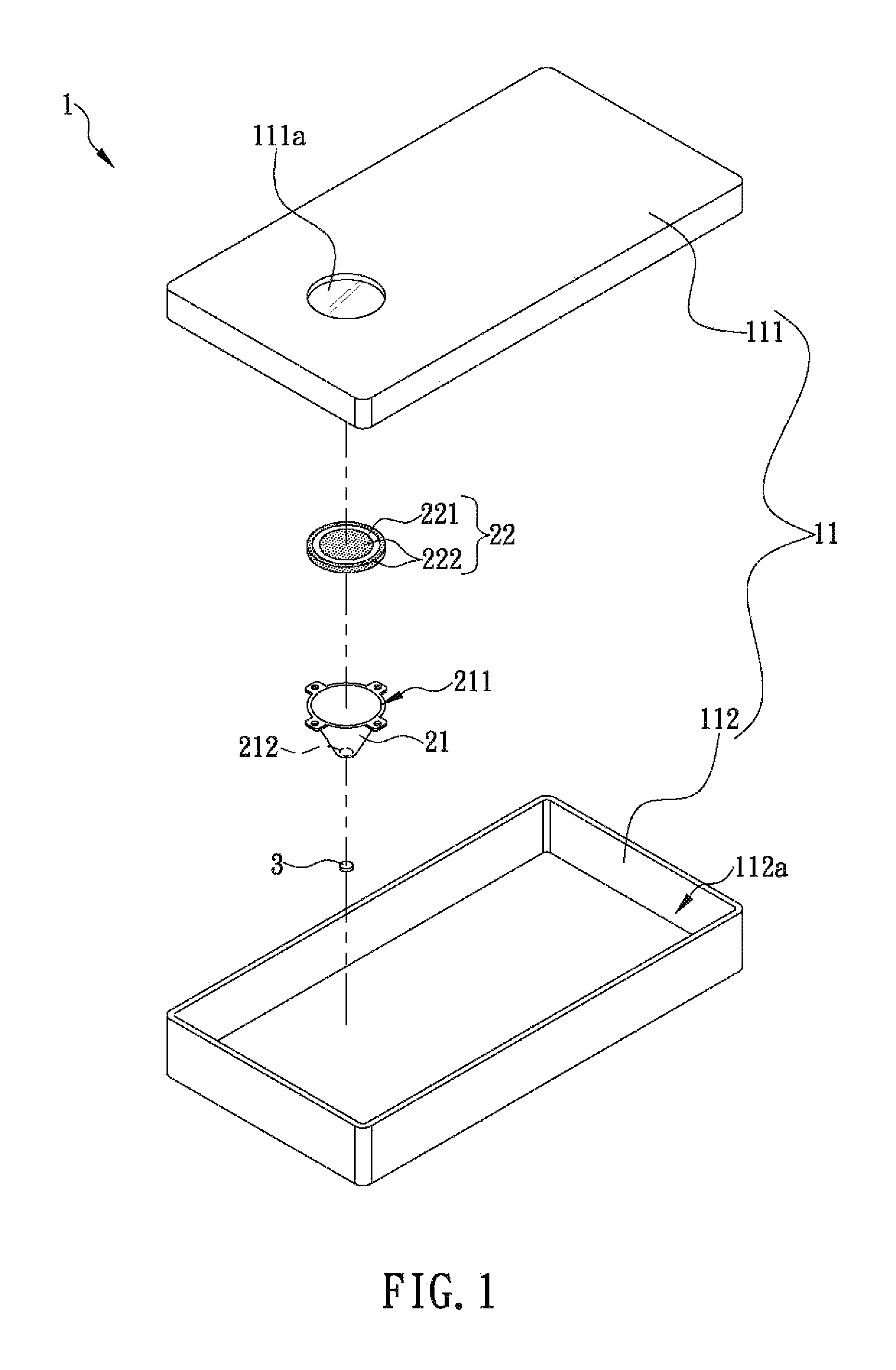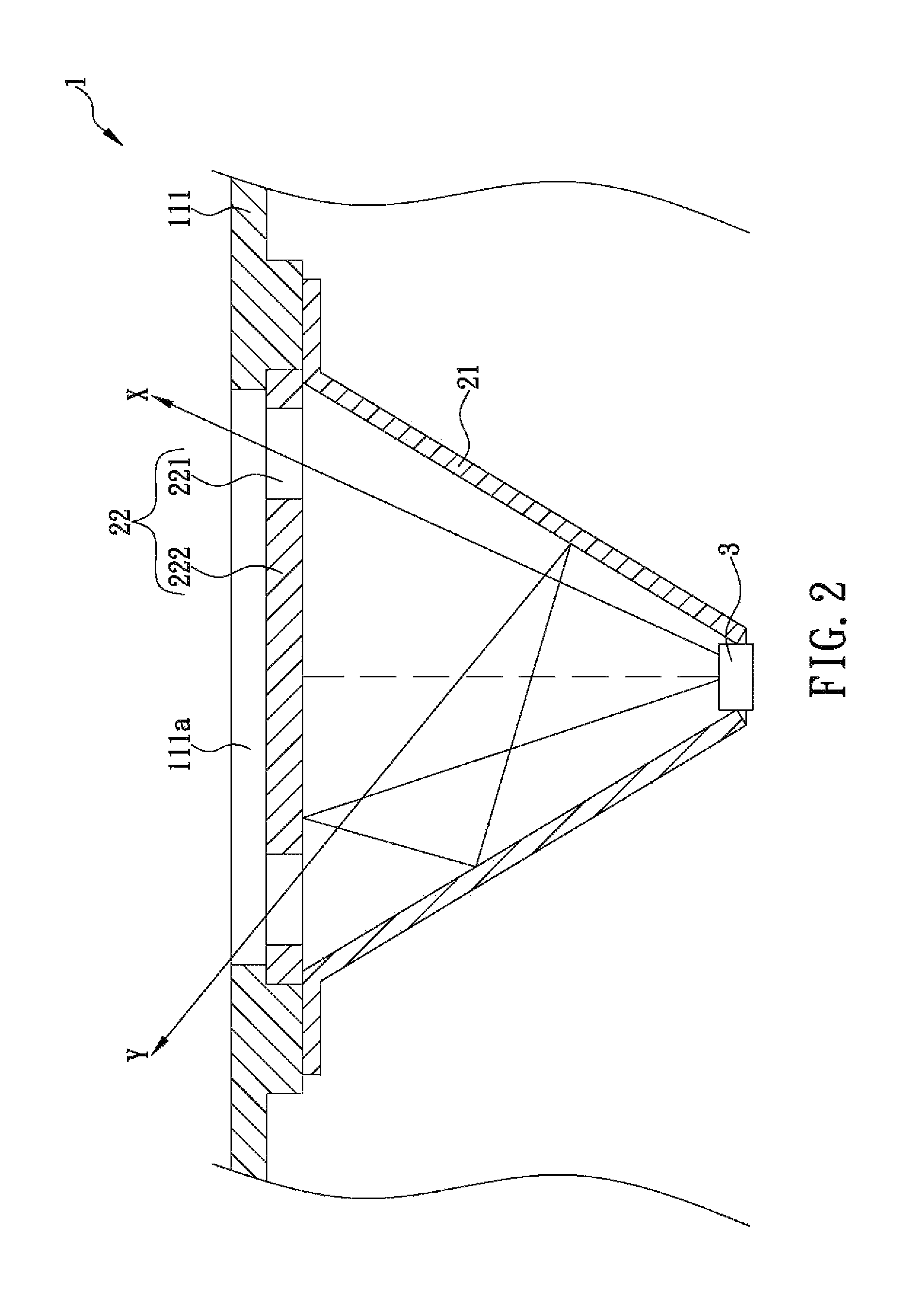Light guide structure having axial-light blocking reflector
a technology of light guide structure and reflector, which is applied in the direction of fibre light guide, lighting and heating apparatus, instruments, etc., can solve the problems of not being able to achieve the desired light-emitting effect, not being able to easily put to practical use with good, and being concentrated in the emission of led light source, etc., to achieve the effect of high market competitiveness
- Summary
- Abstract
- Description
- Claims
- Application Information
AI Technical Summary
Benefits of technology
Problems solved by technology
Method used
Image
Examples
Embodiment Construction
[0011]The present invention discloses a light guide structure for guiding light broadly. Referring to FIG. 1, the light guide structure according to the first preferred embodiment of the present invention is installed in a housing 11 of an electronic device 1 and corresponds in position to a light-permeable portion 111a (or a hollowed-out portion) of the housing 11. In the first preferred embodiment, the housing 11 is assembled from an upper housing member 111 and a lower housing member 112. The upper housing member 111 is provided with a round light-permeable portion 111a, and the light guide structure is installed at a position corresponding to the light-permeable portion 111a. The lower housing member 112, on the other hand, is provided with a receiving space 112a for receiving the light guide structure as well as a circuit board (not shown) and other components (not shown) of the electronic device 1. The formation and assembly method of the housing 11 are not major technical fea...
PUM
 Login to View More
Login to View More Abstract
Description
Claims
Application Information
 Login to View More
Login to View More - R&D
- Intellectual Property
- Life Sciences
- Materials
- Tech Scout
- Unparalleled Data Quality
- Higher Quality Content
- 60% Fewer Hallucinations
Browse by: Latest US Patents, China's latest patents, Technical Efficacy Thesaurus, Application Domain, Technology Topic, Popular Technical Reports.
© 2025 PatSnap. All rights reserved.Legal|Privacy policy|Modern Slavery Act Transparency Statement|Sitemap|About US| Contact US: help@patsnap.com



